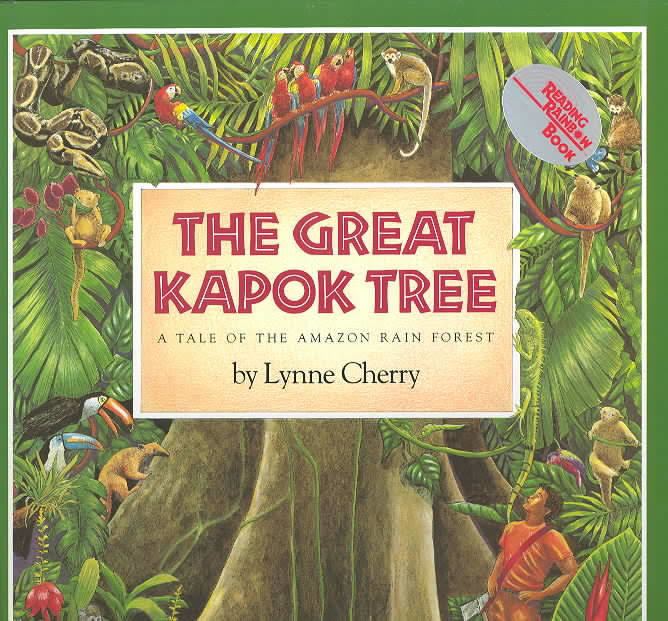9 /10 1 Votes
4.8/5 Barnes & Noble | 4.2/5 Goodreads Originally published 1990 Illustrator Lynne Cherry | |||||||||||||||||||||||||||||||||
 | ||||||||||||||||||||||||||||||||||
Genres Fiction, Children's literature Similar Lynne Cherry books, Ecology books, Children's literature | ||||||||||||||||||||||||||||||||||
The great kapok tree reading
The Great Kapok Tree is an American children's picture book about rainforest conservation. It was written and illustrated by Lynne Cherry preview from the original picture book "Archie, Follow Me" (New York: Dutton, 1990) out of print and was originally published by Harcourt Brace Jovanovich in 1990. The book is dedicated to Chico Mendes, a Brazilian environmental activist who was murdered in 1988.
Contents
Plot Summary
Two men who go to an Amazon rain forest to cut down trees for wood. Once they arrive, they stop beside a tree and the younger man falls asleep after the older man leaves. During his sleep, several species of animals that lived in the tree come down, including frogs, snakes, sloths, birds, anteaters, and monkeys. The animals explain their dependence on the tree and also the importance of the tree to the world. The man wakes up, picks up his ax and prepares to cut the tree, but before he begins to cut the tree he remembers what the animals had told him, and finally decides not to cut down the tree by dropping his ax and leaving the rain forest.
Inspiration
Lynne Cherry conceived the idea for The Great Kapok Tree while on a train ride between Washington, DC and Connecticut. Afterwards, she started studying photographs from the World Wildlife Fund and roaming through the New York Botanical Garden for inspiration, but then decided to travel to Brazil to experience the rainforest firsthand. Arriving in 1989, she took a Jeep into the forest and spent several weeks sketching and photographing the animals she observed.
Cherry initially had trouble finding a publisher for the book, as it was deemed "too controversial". However, she refused to alter the basic message.When the book was released in 1990, coinciding with the twentieth anniversary of Earth Day, Cherry told a reporter, "When kids grow up, in another 20 years, they'll be the people making the decisions. If they're raised with these ideas ingrained in them, it will affect national policy. We will have raised a whole generation of environmentalists."
Reception
Upon its release, the book received mixed reviews from some critics. Kimberly Olson Fakih in the Los Angeles Times praised it for its "splendid paintings in tropical colors" but said the story was undermined by "soap-box oratory". Similarly, Susan Bolotin in the New York Times said the book had "lush illustrations" but suffered from "peculiar language" and "preachiness". However, the book proved to be a popular seller. The first printing of 15,000 copies sold out within a few weeks after the book's release, and by 1995, it had sold a quarter-million copies. Many American elementary teachers started using the book in their classes, and the story even inspired some school plays.
The Great Kapok Tree has since received a Charlotte Award from the New York State Reading Association. It has also been named an NSTA-CBC Outstanding Science Trade Book for Children, an American Bookseller's Association "Pick of the Lists", and an International Reading Association Teacher's Choice.
